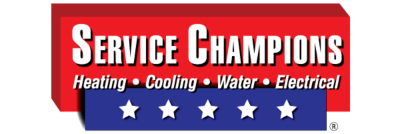Attic Air Sealing And Insulation Tips To Minimize Attic Energy Loss

July 31, 2018
Insulate your attic to minimize heating and cooling costs all year round, increase comfort, minimize the stack effect, and extend the lifespan of your air conditioner and furnace. It’s one of the best ways to reduce energy waste.
According to the U.S. Department of Energy, attic insulation improvements (combined with air sealing and proper HVAC maintenance) can cut your heating and cooling energy use by 20% to 50%.
Read this before you start thinking about adding insulation to your attic. You will need to know which type of insulation to use, the R-value you want to achieve, along with other considerations such as ventilation levels, safety planning, and duct sealing.
We highly recommend speaking with a professional to perform a whole-house energy assessment (energy audit). This will save you a lot of time identifying the areas in your home that need additional air sealing and/or insulation.
Tips for Sealing Air Leaks
Air leaks not only leak precious conditioned air, but they can also result in poor indoor air quality and contribute to moisture problems. It’s important to seal air leaks before adding insulation.
Before you start any significant air sealing project, you should detect air leaks and speak with an HVAC professional about ventilation needs first.
After finding air leaks, review these attic air sealing tips:
- Use caulk and weatherstripping around doors and windows. Remove old caulk and weatherstripping first. Follow manufacturer instructions.
- Use caulk to seal air leaks around plumbing, ducting, and electrical wiring. Use expandable foam spray for any gaps and cavities larger than ¼ inch, but no larger than 3 inches. Don’t forget to check behind attic kneewalls.
- Install foam gaskets behind outlet and switch plates.
- If you notice any dirty or wet spots in insulation, check for air leaks and mold. Consider contacting a mold remediation specialist if there is a lot of mold. Install or repair house flashing if needed and find and seal the air leak.
- Consider replacing single-pane windows with energy-efficient windows.
- Install or replace weatherstripping around attic hatch door.
- Keep fireplace flue damper closed when not in use. Consider an inflatable chimney balloon to seal the flue when not in use.
- Seal air leaks around furnace, water heater, and chimney flues with sheet metal (aluminum flashing) and heat/fire-resistant caulk. Warning: these areas get extremely hot. Be extra careful working around these areas.
- Plumbing pipe should be insulated with expandable foam spray or caulk depending on the size.
Last but not least, seal air duct leaks. According to the EPA, the average home loses around 30% of their conditioned air through leaks in the ductwork. Even if you don’t detect any air leaks around the duct connections, it’s a good idea to insulate them anyway.
While it’s best to have a professional completely seal and insulate your air ducts, you can also DIY seal your air ducts with mastic sealant. Before you start sealing your duct connections, make sure the surface is clean and dry first. Don’t use duct tape!
Where do I add attic insulation?
For unfinished attics, there should be insulation between and over the floor joists. If your HVAC system is located in the attic, consider insulating the rafters as well.
Insulate all kneewalls (walls in the attic with space directly behind them). Don’t forget about insulating the attic hatch (access door).
If you live in a warmer climate, consider installing a radiant barrier.
Do I need more attic insulation?
A quick way to tell if you have insufficient insulation is by heading into the attic with a measuring stick and measuring the depth of your insulation. It depends on where you live, but generally if you have insulation below 5 inches, you could definitely bandit from increased insulation.
Find your location on an R-value map and table to fit your specific climate.
Watch these Vine-style videos from the U.S. Department of Energy to learn how to measure your attic insulation and other attic insulation tips:
Attic Insulation Options
Once you determine that your home could benefit from more attic insulation, you have two main choices: loose fill or batts/rolls.
You can mix and match the different insulation types, but if you choose the loose fill option, you’ll probably want to hire a professional since this requires a large blowing machine. You can also rent this equipment, but the effort is often not worth the savings.
Learn more attic insulation tips from ENERGY STAR.
Visit familyhandyman.com for more in-depth instructions on how to seal attic air leaks.
Professional Attic Insulation from the Champions
Count on Service Champions for any of your sealing and insulation service needs:
EcoCloud™ – a popular blown-in insulation choice featuring recycled paper that repels pests and reduces air leaks.
FiberCloud™ – provides superior comfort and protection for ceiling installations, while helping to absorb sound.
SilverShield™ – this radiant-barrier insulation deflects heat radiation from the sun, especially useful for homes that receive a lot of sun rays.
Financing and rebates are available for all our attic insulation options.
While other HVAC companies might avoid tricky insulation projects, we know how important insulation is to your home comfort and energy savings!
The sooner you improve your attic insulation, the better. So, don’t wait to contact Service Champions for professional attic insulation services.
